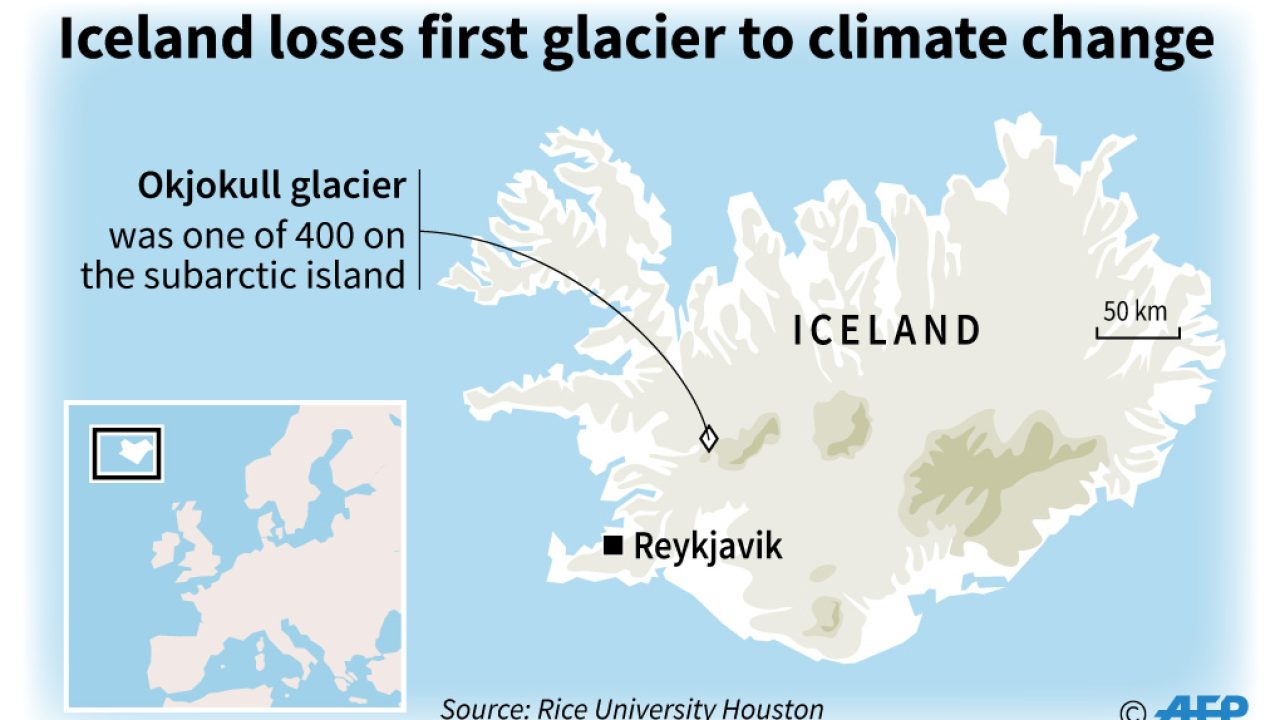Context:
Satellite images taken over three decades apart reveal the shocking disappearance of Iceland's Okjökull glacier, officially declared dead in 2014 due to human-caused climate change.
About Okjökull glacier
Located on the Ok volcano in Iceland, Okjökull was a dome-shaped glacier that covered approximately 15 square miles in 1901. By 1986, the ice had dwindled to less than 1 square mile. The final blow came in 2019, when the glacier's ice covered a mere 0.4 square miles. The glacier became the first to be officially declared dead due to human-caused climate change in 2014.
What are Glaciers?
Glaciers are large, perennial accumulations of snow and ice that slowly flow over land due to gravity and their own weight.
- Formation Conditions: They form in regions where the annual mean temperature is near freezing, and where snowfall during the winter is substantial enough to create significant snow accumulation.

Importance of Glaciers
1. Water Reservoirs:
o Glaciers hold about 75% of the Earth's freshwater, acting as crucial long-term water sources for many regions.
2. Food Systems:
o They provide water for irrigation, especially in regions where other water sources may be limited, and their meltwater helps fertilize the land, supporting agriculture.
3. Biodiversity:
o Glacial meltwaters contribute nutrients to lakes, rivers, and oceans, supporting vital ecosystems, particularly by driving phytoplankton blooms, which are fundamental to aquatic food chains.
Impact of Glacier Melting Due to Climate Change
1. Disrupted Water Cycles:
o As glaciers melt, the availability of freshwater becomes more uncertain, affecting ecosystems, agriculture, and the overall water supply.
2. Natural Disasters:
o Melting glaciers can lead to the risk of Glacial Lake Outburst Floods (GLOFs) and avalanches, which can cause widespread damage to surrounding areas.
3. Sea Level Rise:
o The melting of glaciers contributes to rising sea levels, which leads to coastal erosion, habitat loss, and a decline in biodiversity.
4. Climate Feedback Loop:
o As glaciers melt, the Earth's reflectivity (albedo) decreases, absorbing more heat and accelerating global warming, creating a vicious cycle.
Initiatives to Protect Glaciers
1. Global Initiatives:
o The United Nations has designated 2025 as the International Year of Glaciers' Preservation to raise awareness.
o UNESCO's Intergovernmental Hydrological Programme and other global organizations are also working on solutions to mitigate glacier loss.
2. India’s Efforts:
o India is focusing on the Himalayan Cryosphere through research programs such as the Network Programme on the Himalayan Cryosphere, the Centre for Cryosphere & Climate Change Studies, and the HIMANSH research station.
Conclusion:
As the concentration of carbon dioxide in the atmosphere continues to rise, reaching over 428 parts per million in March 2025, the need for urgent action becomes increasingly clear. The story of Okjökull serves as a visual testament to the devastating consequences of climate change, emphasizing the importance of collective efforts to mitigate its effects.






